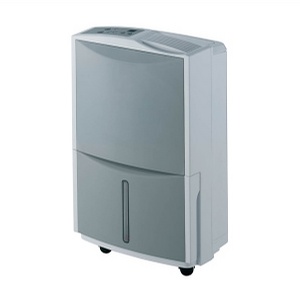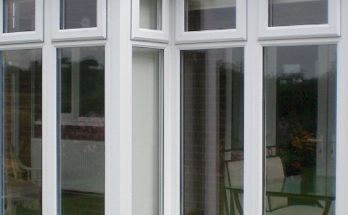
The main reason for dampness and mould to occur is improperly built and insulated houses. Either the foundation hasn’t been laid properly or the wall insulation has been done wrongly. Another possible cause is lack of ventilation. Get those windows open! Have you checked your roofs and plumbing for possible leaks?
Mouldy surfaces pose great health risks. The spores from the fungi get in the airstream and end up into your lungs. Mould can cause allergic reaction, skin conditions, asthma, bronchitis, migraine and many others.
A very good damp prevention method is to use dehumidifiers. It’s an appliance that takes extra moist out of the air. The optimum air humidity in homes is 45%. You’ll find that in England (and other rainy, islandy places) humidity rarely falls below 60%. I am using DuraCraft dehumidifiers because they are amongst the last few “not made in China” manufacturers. You just have to shop around before you find a shop that stocks DuraCraft because their UK dealer network is rather sporadic. They can be relatively expensive but I recently managed to buy one just below £100. Which is cheaper than a similar DeLonghi (and less noisy than the Italian job).
A modern dehumidifier uses little energy – 150 – 175W nominal power is a norm for a full-size appliance. Unless your house is very damp, the dehumidifier will come on and off, eventually using as much energy as two lightbulbs. A 175W appliance is capable of serving three standard size rooms providing the door is kept open, so an average British home will need two dehumidifiers – one upstairs, one downstairs.
Rooms should be regularly ventilated. Open the windows occasionally even during the winter and rainy days. The majority of dampness is coming into your house via improperly laid foundation not through the windows.
If you’re thinking about retrofitting cavity wall insulation, rethink it. Your house might get warmer but you might also get the mould. Especially if they use anything based on polystyrene or any other synthetic foamy material. Alternatively you can use recycled newspaper or denim blow-in insulation or glue cork veneer on the inside wall.
So, how to fight mould when it’s already occurred? The easiest way is to get a specialist company to remove the mould for you. However, the majority of them will use heavy chemicals. Doesn’t sound like a very good idea.
It is possible to remove the fungus mechanically, using any strong cleaning substance (washing powder will do). Remember to use a respirator if you remove the mould on your own. There are some natural and traditional folk methods that are constantly getting bad press from companies who want to sell more of their chemical stuff. However, I would say those folk methods work. The easiest is to dilute 2 teaspoons of tea tree oil in a glass of warm water, shake well and spray that mixture on the damaged surfaces (using a garden spray). Leave it for a few hours and mechanically remove the colonies using a damp cloth and soap water. After that, repeat the tea tree treatment to be double sure.
After the mould is gone, it makes sense to treat the surface with a protein based anti-fungal solution. Those that work are blue, milky and sticky when you rub it with fingers.
Don’t just leave the mould on the wall. Fight it and make sure you look for the cause. It might be a sign that something is wrong with your house!


Is the nominal power of those dehumidifiers really 150 kW (kilowatts), not 150 W (watts)?
In Poland, where I live, the main cause for condensation on walls that allows mould to grow is the lack of proper ventillation. Some people tend to close all the holes that allow natural ventillation to work properly, because they believe it saves them money. While it does save a little (you stop cold air from entering the house and wark from escaping it), it causes much damage to the walls.
LOL! The laugh of the day! Imagine a 150kW dehumidifier. It would be one heck of a machine. Of course, it is 150W, thanks for pointing that out. I think I need to get some sleep.
Regarding the lack of ventilation, I totally agree. Some people have found that after they install double glazing (i.e. shut the last “holes” that there are) their homes are starting to rot.